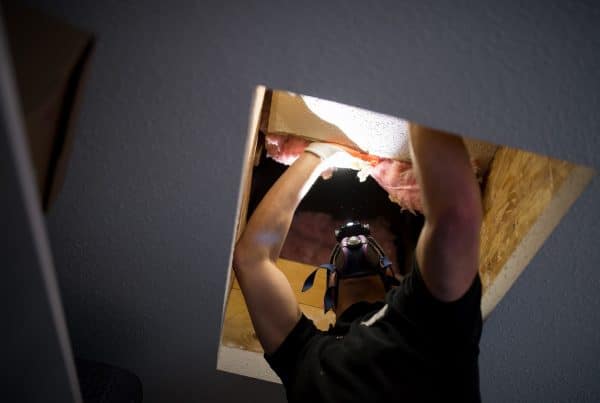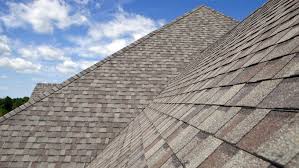A Guide for Homebuyers and Real Estate Agents
During a home inspection, one of the most common electrical issues found—especially in older homes—is the lack of GFCI protection. This can be concerning for homebuyers and real estate agents who may not fully understand what GFCIs do and why they are important.
However, a home without GFCI protection is not a deal killer. The key is understanding what they are, why they matter, and how they can be added to improve safety. In this blog, we’ll break down everything you need to know about GFCI protection and provide practical solutions for homes that lack it.
What Is a GFCI-Protected Circuit and Why Is It Used?
GFCI stands for Ground Fault Circuit Interrupter. A GFCI device is designed to protect people from electrical shock by quickly shutting off power when it detects an imbalance in the electrical current.
How It Works
Electricity should flow in a balanced loop—out through the hot wire and back through the neutral wire. If even a tiny amount of current (as little as 5 milliamps) leaks out of this loop, the GFCI trips within milliseconds to prevent potential shock.
For example, if a person accidentally touches a live wire and the electrical current starts flowing through their body instead of returning through the circuit, the GFCI shuts off power instantly, reducing the risk of electrocution.
Why Are They Important?
GFCIs are primarily used in areas where water and electricity could come into contact, as water increases the risk of electrical shock. This includes bathrooms, kitchens, garages, basements, and outdoor outlets.
When Did GFCI Outlets Become a Requirement in Homes?
GFCI requirements have evolved over time as electrical safety standards have improved. Here’s a timeline of when and where GFCIs became mandatory in residential homes:
- 1971: Exterior outlets near swimming pools required GFCI protection
- 1975: Bathroom outlets added to the requirement
- 1978: Garage outlets required to have GFCI protection
- 1987: Kitchen countertops and unfinished basement outlets included
- 1993: Crawl spaces and wet bar outlets added
- 1996: All outdoor outlets required GFCI protection
- 2005: Laundry areas required GFCI protection
- 2014: Dishwasher outlets added to the requirement
- 2020: GFCI requirements expanded to include certain HVAC systems and additional locations
Many older homes were built before these rules existed, so it’s common to find homes without GFCI protection in areas where it is now required.
What Are Some Common Repair Solutions If a Home Lacks GFCI Protection?
If a home lacks GFCI-protected outlets, it can be corrected relatively easily by a licensed electrician or even a knowledgeable homeowner. Here are some common solutions:
1. Replace Standard Outlets with GFCI Outlets
- The simplest fix is to replace standard outlets with GFCI outlets in required areas. These outlets typically cost $15 to $30 each, plus labor if installed by an electrician.
- Only one GFCI outlet is needed per circuit to provide protection for all outlets downstream. This means that in a typical circuit with 8-10 outlets, you do not need to replace every outlet with a GFCI outlet. Instead, replacing the first outlet after the circuit breaker will protect all the outlets connected after it.
- To determine which outlet is first on the circuit, an electrician or knowledgeable homeowner can use a circuit tester or turn off the breaker and check which outlet loses power first. Once installed, the GFCI outlet will shut off power to all outlets downstream if a ground fault is detected, ensuring safety for the entire circuit.
2. Install a GFCI Circuit Breaker in the Electrical Panel
- Instead of replacing each individual outlet, a GFCI circuit breaker can be installed in the home’s electrical panel. This protects all outlets on that circuit and typically costs $50 to $100 per breaker, plus labor.
3. Use GFCI-Equipped Extension Cords or Adapters
- In situations where immediate replacement isn’t possible, temporary solutions like GFCI-equipped extension cords or adapters can provide protection until permanent fixes are made.
4. Upgrade Older Electrical Wiring if Necessary
- In very old homes (pre-1960s), wiring may not include a ground wire. In these cases, an electrician may need to upgrade the wiring or install a GFCI outlet labeled “No Equipment Ground”, which still provides shock protection.
Lack of GFCI Protection Is Not a Deal Killer
If an inspection report notes a lack of GFCI protection, it should be viewed as an important safety upgrade—not a major defect that kills a deal.
For homebuyers, this is typically a minor and inexpensive fix compared to other electrical or structural issues. In many cases, installing GFCI outlets can be negotiated with the seller or factored into the home’s overall condition.
For real estate agents, educating clients about GFCIs can help reduce fear and uncertainty when inspection reports flag missing protection. Agents can also advise sellers to have an electrician install GFCI outlets before listing the home to prevent unnecessary negotiation delays.
Final Thoughts
GFCI protection is an important safety feature that prevents electrical shocks, especially in areas where water is present. While older homes may not have GFCI outlets installed, this is not a major issue and can be corrected with simple upgrades.
If you’re buying or selling a home and have questions about GFCI protection or other electrical safety concerns, feel free to reach out—we’re here to help!



